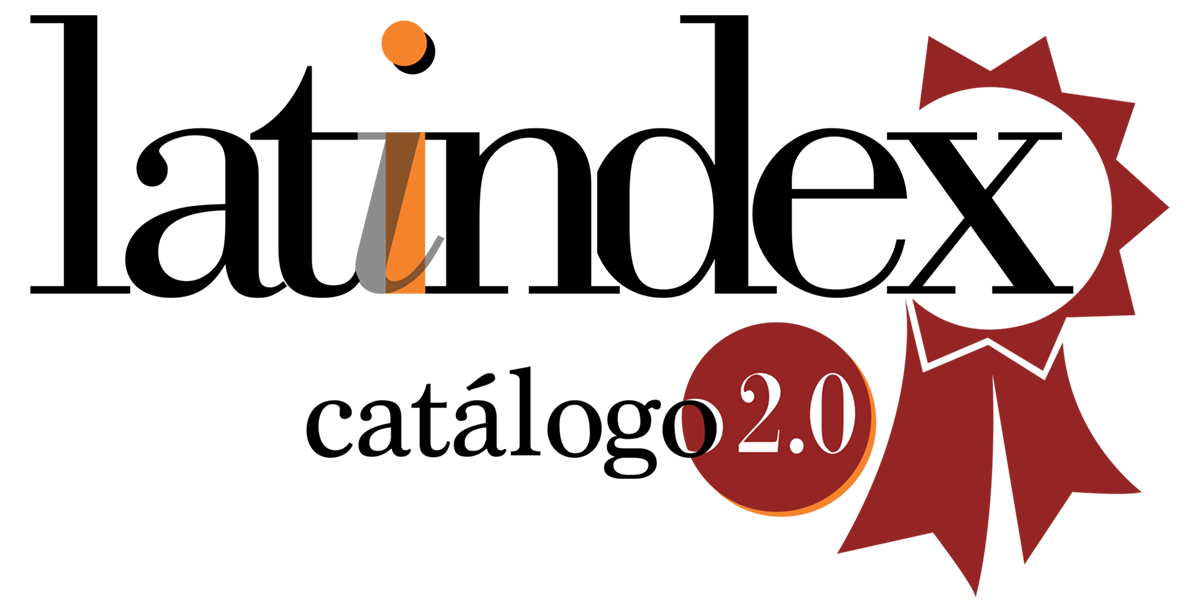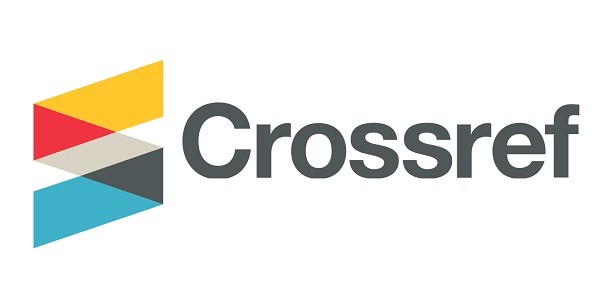Tratamento conservador da ruptura do ligamento cruzado anterior.
DOI:
https://doi.org/10.35954/SM2024.43.2.3.e401Palavras-chave:
Lesões do Ligamento Cruzado Anterior, Procedimentos de Cirurgia Plástica, Tratamento Conservador, Terapia por Exercício, Traumatismos do Joelho.Resumo
Introdução: A ruptura do ligamento cruzado anterior é uma lesão prevalente que afeta principalmente indivíduos jovens e fisicamente ativos. A lesão é caracterizada pela instabilidade da articulação do joelho, levando a uma diminuição da atividade física e da qualidade de vida relacionada ao joelho. A reconstrução cirúrgica é geralmente considerada o tratamento de escolha, especialmente para aqueles que desejam retornar ao esporte. No entanto, existe uma abordagem conservadora que utiliza diferentes protocolos de reabilitação.
Objetivo: avaliar as evidências científicas disponíveis sobre os protocolos de tratamento conservador para a ruptura do ligamento cruzado anterior na população adulta e sua eficácia no retorno à atividade física, na melhoria da qualidade de vida e no desencorajamento da intervenção cirúrgica.
Materiais e métodos: foi realizada uma pesquisa bibliográfica sistematizada nos seguintes bancos de dados: MEDLINE/PubMed, LILACS, Scielo, ResearchGate e Google Scholar. O intervalo de tempo considerado foi de 2010 até a presente data. Foram obtidos 177 resultados da pesquisa, sendo 28 para este artigo, e, de acordo com os critérios de inclusão e exclusão, 9 artigos foram selecionados para análise.
Resultados: destaca-se a variabilidade no nível de evidência dos artigos analisados: 3 de nível I, 2 de nível II, 3 de nível III e 1 de nível IV. A eficácia no retorno à atividade física foi superior a 70% (com o nível de atividade física no retorno diferindo de acordo com o estudo) em comparação com o nível pré-lesão. Diferentes escalas de funcionalidade e qualidade de vida relacionada ao joelho foram usadas pelos autores, mostrando melhorias nos escores ao final do tratamento. A necessidade de intervenção cirúrgica naqueles que implementaram apenas o tratamento conservador foi de 13,76% do total, enquanto naqueles que, por protocolo, puderam optar pela intervenção cirúrgica, foi de 36,68% do total.
Conclusão: os protocolos de tratamento conservador baseados no treinamento neuromuscular e no fortalecimento guiado dos membros inferiores representam uma boa opção terapêutica para melhorar a qualidade de vida, o retorno à atividade física e desencorajar a intervenção cirúrgica em populações adultas. O tratamento conservador da ruptura do ligamento cruzado anterior significa menores custos efetivos de saúde.
Este artigo foi aprovado pelo Conselho Editorial.
Recebido para revisão: março de 2024.
Aceite para publicação: junho de 2024.
Correspondência: Enrique Muñoz 870, Ap. 401. CP 11300. Montevidéu, Uruguai. Tel: +598 099040085.
E-mail de contacto: diegoaiscar@gmail.com
Downloads
Métricas
Referências
(1) Micheo W, Hernández L, Seda C. Evaluation, management, rehabilitation, and prevention of anterior cruciate ligament injury: current concepts. PM R 2010 Oct; 2(10):935-44. DOI: 10.1016/j.pmrj.2010.06.014.
(2) Valderrama-Treviño AI, Granados-Romero JJ, Alvarado Rodríguez C, Barrera-Mera B, Contreras-Flores EH, Uriarte-Ruíz K, et al. Lesión del ligamento cruzado anterior. Ortho-tips 2017; 13(4):160-168.
(3) Forriol F. El Ligamento cruzado anterior: morfología y función [Internet]. Trauma: (fusión de la revista MAPFRE Medicina y la revista Patología del Aparato Locomotor) 2008; 19 (Supl. 1):7-18.
(4) Viñao Auré A. Factores de riesgo y prevención de la rotura del ligamento cruzado anterior en deportistas. [tesis en línea]. Universidad de Valladolid, Facultad de Fisioterapia de Soria, 2016. 57 p. Disponible en: https://uvadoc.uva.es/bitstream/handle/10324/20765/TFGO%20904.pdf?sequence=1&isAllowed=y [Consulta 10/02/2024].
(5) Grindem H, Wellsandt E, Failla M, Snyder-Mackler L, Risberg MA. Anterior Cruciate Ligament Injury-Who Succeeds Without Reconstructive Surgery? The Delaware- Oslo ACL Cohort Study. Orthop J Sports Med 2018 May 23; 6(5):2325967118774255. DOI: 10.1177/2325967118774255.
(6) Frobell RB, Roos EM, Roos HP, Ranstam J, Lohmander LS. A randomized trial of treatment for acute anterior cruciate ligament tears. N Engl J Med 2010 Jul 22; 363(4):331-42. DOI: 10.1056/NEJMoa0907797. Erratum in: N Engl J Med 2010 Aug 26; 363(9):893.
(7) Griffin LY, Albohm MJ, Arendt EA, Bahr R, Beynnon BD, Demaio M, et al. Understanding and preventing noncontact anterior cruciate ligament injuries: a review of the Hunt Valley II meeting, January 2005. Am J Sports Med 2006 Sep; 34(9):1512-32. DOI: 10.1177/0363546506286866.
(8) Taylor JB, Waxman JP, Richter SJ, Shultz SJ. Evaluation of the effectiveness of anterior cruciate ligament injury prevention programme training components: a systematic review and meta- analysis. Br J Sports Med 2015 Jan; 49(2):79-87. DOI: 10.1136/bjsports-2013-092358.
(9) Guerrero Molina JA, Espregueira Mendes J. Retorno al deporte tras la reconstrucción del liga- mento cruzado anterior. Rev Esp Artrosc Cir Articul 2020; 27(3):251-9. DOI: 10.24129/j.reaca.27369.fs1906029.
(10) Gianotti SM, Marshall SW, Hume PA, Bunt L. Incidence of anterior cruciate ligament injury and other knee ligament injuries: a national population- based study. J Sci Med Sport 2009 Nov; 12(6):622-7. DOI: 10.1016/j.jsams.2008.07.005.
(11) Álvarez R, Gómez G, Pachano Pastrana A. Actualización bibliográfica del mecanismo de lesión sin contacto del ligamento cruzado anterior. Rev Asoc Argent Traumatol Deporte 2018; 25(1):50-58.
(12) Nicolini AP, de Carvalho RT, Matsuda MM, Sayum JF, Cohen M. Common injuries in athletes' knee: experience of a specialized center. Acta Ortop Bras 2014; 22(3):127-31. DOI: 10.1590/1413-78522014220300475.
(13) Keays SL, Newcombe P, Keays AC. Nearly 90% participation in sports activity 12 years after non-surgical management for anterior cruciate ligament injury relates to physical outcome measures. Knee Surg Sports Traumatol Arthrosc 2019 Aug; 27(8):2511-2519. DOI: 10.1007/s00167-018-5258-y.
(14) Beard DJ, Davies L, Cook JA, Stokes J, Leal J, Fletcher H, et al. Rehabilitation versus surgical reconstruction for non-acute anterior cruciate ligament injury (ACL SNNAP): a pragmatic randomised controlled trial. Lancet 2022 Aug 20; 400(10352):605-615. DOI: 10.1016/S0140-6736(22)01424-6.
(15) Reijman M, Eggerding V, van Es E, van Arkel E, van den Brand I, van Linge J, et al. Early surgical reconstruction versus rehabilitation with elective delayed reconstruction for patients with anterior cruciate ligament rupture: COMPARE randomised controlled trial. BMJ 2021 Mar 9; 372(375):n375. DOI: 10.1136/bmj.n375.
(16) Pedersen JR, Hansen SH, Grindem H, Jepsen AP, Thorlund JB. Readiness for return to sport in non-surgically treated patients with anterior cruciate ligament injury following a public municipal rehabilitation program. Phys Ther Sport 2022 Jan; 53:7-13. DOI: 10.1016/j.ptsp.2021.10.016.
(17) Park YG, Ha CW, Park YB, Na SE, Kim M, Kim TS, et al. Is it worth to perform initial non- operative treatment for patients with acute ACL injury?: a prospective cohort prognostic study. Knee Surg Relat Res 2021 Apr 6; 33(1):11. DOI: 10.1186/s43019-021-00094-3.
(18) Filbay SR, Dowsett M, Chaker Jomaa M, Rooney J, Sabharwal R, Lucas P, et al. Healing of acute anterior cruciate ligament rupture on MRI and outcomes following non-surgical management with the Cross Bracing Protocol. Br J Sports Med 2023 Dec; 57(23):1490-1497. DOI: 10.1136/bjsports-2023-106931.
(19) Kovalak E, Atay T, Çetin C, Atay IM, Serbest MO. Is ACL reconstruction a prerequisite for the patients having recreational sporting activities? Acta Orthop Traumatol Turc 2018 Jan; 52(1):37-43. DOI: 10.1016/j.aott.2017.11.010.
(20) Roos EM, Roos HP, Lohmander LS, Ekdahl C, Beynnon BD. Knee Injury and Osteoarthritis Outcome Score (KOOS)--development of a self- administered outcome measure. J Orthop Sports Phys Ther 1998 Aug; 28(2):88-96. DOI: 10.2519/jospt.1998.28.2.88.
(21) Tegner Y, Lysholm J. Rating systems in the evaluation of knee ligament injuries. Clin Orthop Relat Res 1985 Sep; (198):43-9. PMID: 4028566.
(22) Hefti F, Müller W, Jakob RP, Stäubli HU. Evaluation of knee ligament injuries with the IKDC form. Knee Surg Sports Traumatol Arthrosc 1993; 1(3-4):226-34. DOI: 10.1007/BF01560215.
(23) Lysholm J, Gillquist J. Evaluation of knee ligament surgery results with special emphasis on use of a scoring scale. Am J Sports Med 1982 May-Jun; 10(3):150-4. DOI: 10.1177/036354658201000306.
(24) Mohtadi N. Development and validation of the quality of life outcome measure (questionnaire) for chronic anterior cruciate ligament deficiency. Am J Sports Med 1998 May-Jun; 26(3):350-9. DOI: 10.1177/03635465980260030201.
(25) Irrgang JJ, Snyder-Mackler L, Wainner RS, Fu FH, Harner CD. Development of a patient- reported measure of function of the knee. J Bone Joint Surg Am 1998 Aug; 80(8):1132-45. DOI: 10.2106/00004623-199808000-00006.
(26) Keays SL, Bullock-Saxton JE, Newcombe P, Bullock MI. The effectiveness of a pre-operative home-based physiotherapy programme for chronic anterior cruciate ligament deficiency. Physiother Res Int 2006 Dec; 11(4):204-18. DOI: 10.1002/pri.341. Erratum in: Physiother Res Int 2007 Sep; 12(3):195.
(27) Irrgang JJ, Anderson AF, Boland AL, Harner CD, Kurosaka M, Neyret P, et al. Development and validation of the international knee documentation committee subjective knee form.Am J Sports Med 2001 Sep-Oct; 29(5):600-13. DOI: 10.1177/03635465010290051301.
(28) Grindem H, Logerstedt D, Eitzen I, Moksnes H, Axe MJ, Snyder-Mackler L, et al. Single-legged hop tests as predictors of self- reported knee function in nonoperatively treated individuals with anterior cruciate ligament injury. Am J Sports Med 2011 Nov; 39(11):2347-54. DOI: 10.1177/0363546511417085.

Downloads
Publicado
Como Citar
Edição
Seção
Licença
Copyright (c) 2024 : Diego Aiscar Fernández y Gerardo Amilivia. O autor mantém seus direitos autorais e concede à revista o direito de primeira publicação de sua obra, que está simultaneamente sujeita à Licença Internacional Creative Commons 4.0 que permite que a obra seja compartilhada, desde que seja indicada a publicação inicial nesta revista.

Este trabalho está licenciado sob uma licença Creative Commons Attribution-NonCommercial 4.0 International License.
Até 2024, usamos a licença Creative Commons Attribution/NonCommercial Attribution 4.0 International https://creativecommons.org/licenses/by-nc/4.0/deed.es. Que estabelece que: você é livre para compartilhar, copiar e redistribuir o material em qualquer meio ou formato, e para adaptar, remixar, transformar e desenvolver o material. De acordo com os seguintes termos:
Atribuição: você deve dar o devido crédito, fornecer um link para a licença e indicar se foram feitas alterações. Você pode fazer isso de qualquer forma razoável, mas não de uma forma que sugira que você ou seu uso é endossado pelo licenciante.
Não comercial: você não pode usar o material para fins comerciais.
A partir de 2025, os autores mantêm seus direitos autorais e cedem à revista o direito de primeira publicação de seu trabalho, que estará simultaneamente sujeito à licença https://creativecommons.org/licenses/by-nc-sa/4.0/deed.es, que permite o compartilhamento, a cópia e a redistribuição do material em qualquer meio ou formato, desde que a publicação inicial nesta revista seja indicada. Adaptar, remixar, transformar e desenvolver o material. Se você remixar, transformar ou construir a partir do material, deverá distribuir sua contribuição sob a mesma licença do original e não poderá fazer uso do material para fins comerciais.
De acordo com os seguintes termos:
1. atribuição: você deve dar o devido crédito, fornecer um link para a licença e indicar se foram feitas alterações. Você pode fazer isso de qualquer maneira razoável, mas não de forma a sugerir que você ou seu uso seja endossado pelo licenciante.
2. não comercial: você não pode usar o material para fins comerciais.
3. ShareAlike: se você remixar, transformar ou desenvolver o material, deverá distribuir sua contribuição sob a mesma licença do original.
PlumX Metrics






























